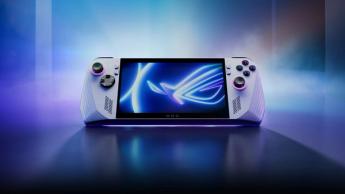AMDが新ドライバーをリリース、AFMF 2.1対応で携帯型ゲーミングPCのフレーム生成が向上
AFMF 2.1アップデートでAMD搭載ポータブル端末のゲーム体験がさらに滑らかに

AMDのRDNA 4 GPUが正式に発売され、FSR 4に対応した新しいドライバーもリリースされました。しかし、アップデートはそれだけにとどまりません。ハンドヘルド型ゲーミングPCユーザーや、RDNA 3・2世代のGPUを搭載したユーザーも、ゲームパフォーマンスを向上させる新機能も利用可能になっています。
最新のAdrenalin Editionリリースノートによると、AFMF 2.1がドライバー バージョン25.3.1で利用可能になりました。対応するのはRadeon RX 6000、7000、9070シリーズGPUおよびRyzen AI 300シリーズプロセッサーです。このドライバーベースのフレーム生成技術は、市場にある他のソリューションと同様、公式に開発元がサポートしていないゲームでもフレーム生成を有効化できるのが特徴です。
AFMF 2.1は、フレーム生成時の画質向上やゴースト現象の低減、モーショントラッキングの精度向上を目指して設計されています。従来のAFMFでは、ハンドヘルド端末でゴーストやカクつき、画質低下などの問題が発生し、ゲーム体験に影響を与えていました。
AFMF 2.1の初期レビューでは、前バージョンと比べて明らかな改善が見られ、特にスピーディーなアクションシーンで映像がより鮮明になり、ゴースト現象も大幅に減少しています。『Sifu』や『バイオハザード RE:4』のように、以前はゴーストやフレームタイムの乱れが頻発していたゲームでも、これらの問題が大きく改善されています。
これにより、激しいゲームプレイ中でも従来のようなフレームタイムの急激な変動がなく、よりスムーズに動作するようになりました。ゲームがアイドル状態でも安定しており、ハンドヘルド型ゲーミングPCにとって大きな進歩となりました。これまでフレーム生成ソフトで苦戦していたタイトルでも、より快適なパフォーマンスが期待できます。
RDNA 3でのFSR 4:携帯型ゲーミングのゲームチェンジャーとなるか?
FSR 4は現在、最新のRadeon RX 9070シリーズでのみ利用可能ですが、この先進的なアップスケーリング技術がRDNA 3対応ハードウェアにも導入されれば、携帯型ゲーマーにとって大きな期待が持てます。
FSR 4は、NvidiaのDLSS 4や新しいトランスフォーマーモデルに迫る画質を実現しています。完全にDLSS 4を上回るわけではありませんが、FSR 4は従来のアップスケーリングモデルに比べて安定したビジュアルを提供し、とくにスピーディーなアクション時にその効果を発揮します。最近配信されたAFMF 2.1アップデートでもROG Allyでの体験が向上しましたが、FSR 4が加われば、さらに大きな進化となるでしょう。
FSR 4のパフォーマンスモードは、DLSS 4のパフォーマンスモードで見られるような大幅な改善を実現しています。このレベルのパフォーマンスが携帯型ゲーミングPCで体感できると想像すると、ワクワクせずにはいられません。
現在、携帯型チップ市場でAMDの主な競合はインテルです。MSI Claw 8 AI+は、Ultra Core 7 258Vプロセッサを搭載し、Z1 Extremeをパワーで上回っていますが、インテルの現行XeSSアップスケーリング技術はFSR 4には及びません。私の見解では、AMDの最新アップスケーリング技術こそがROG Allyのような携帯型デバイスを次のステージへ押し上げる“最後のピース”となり得るでしょう。近い将来、これが現実となることを期待しています。
